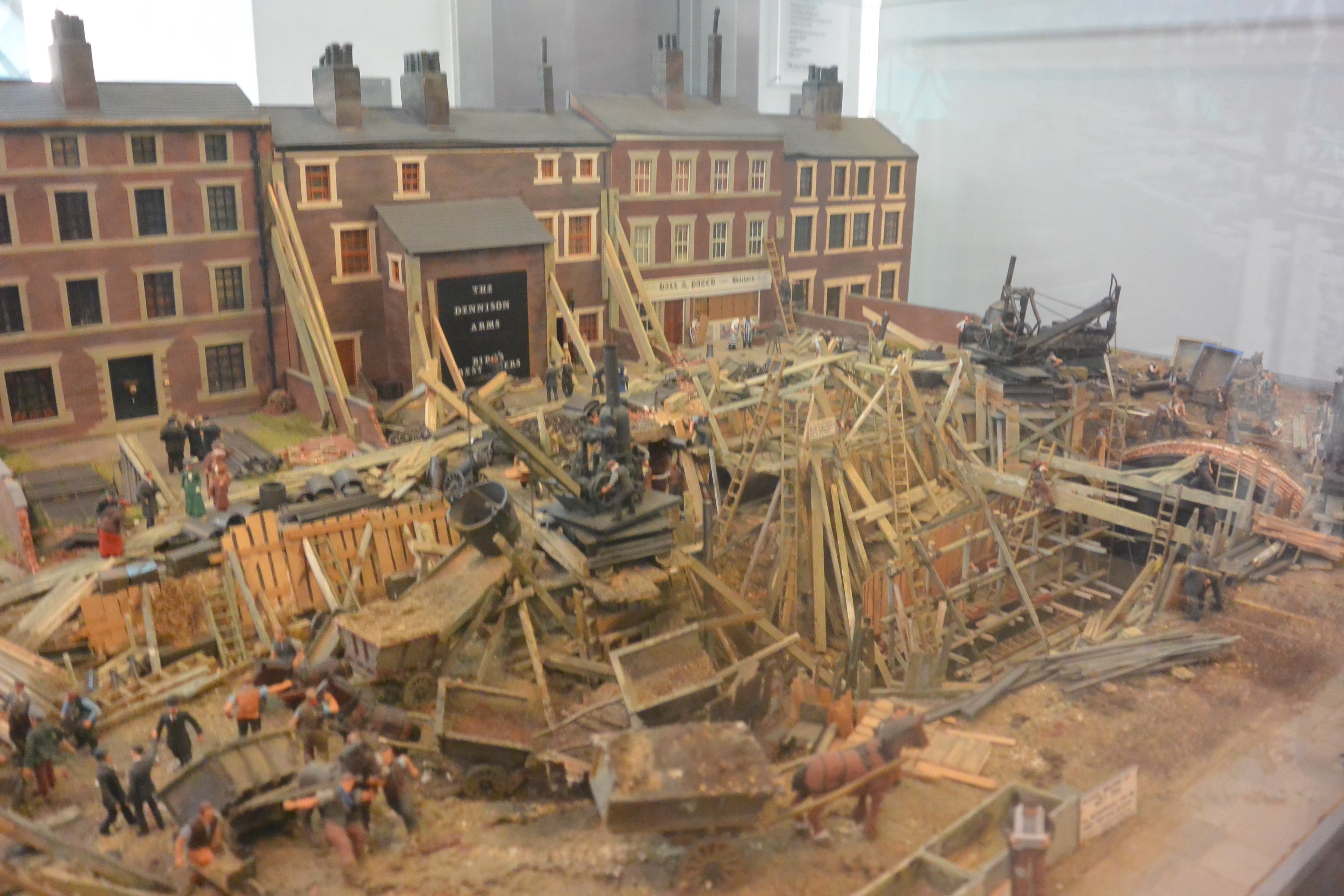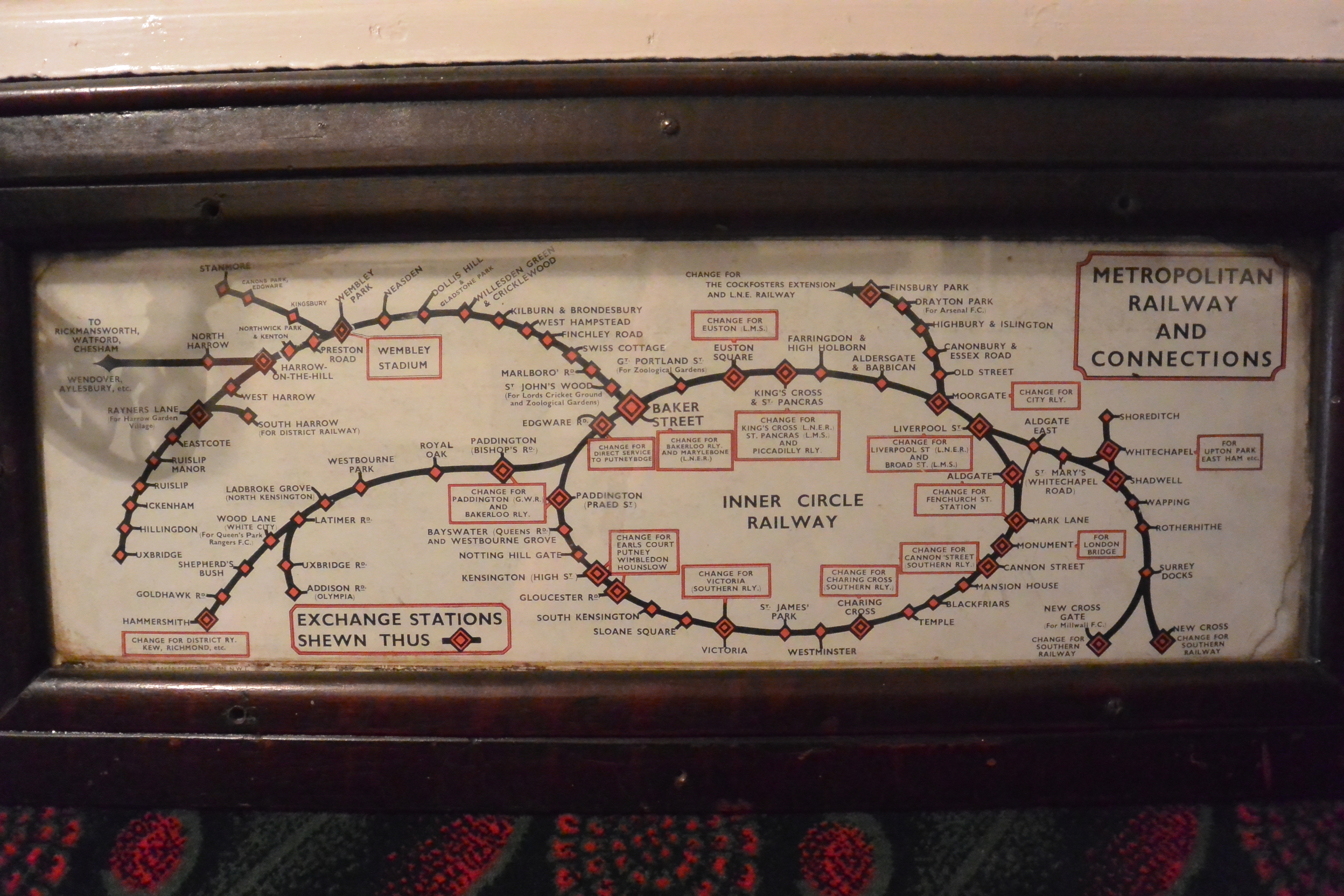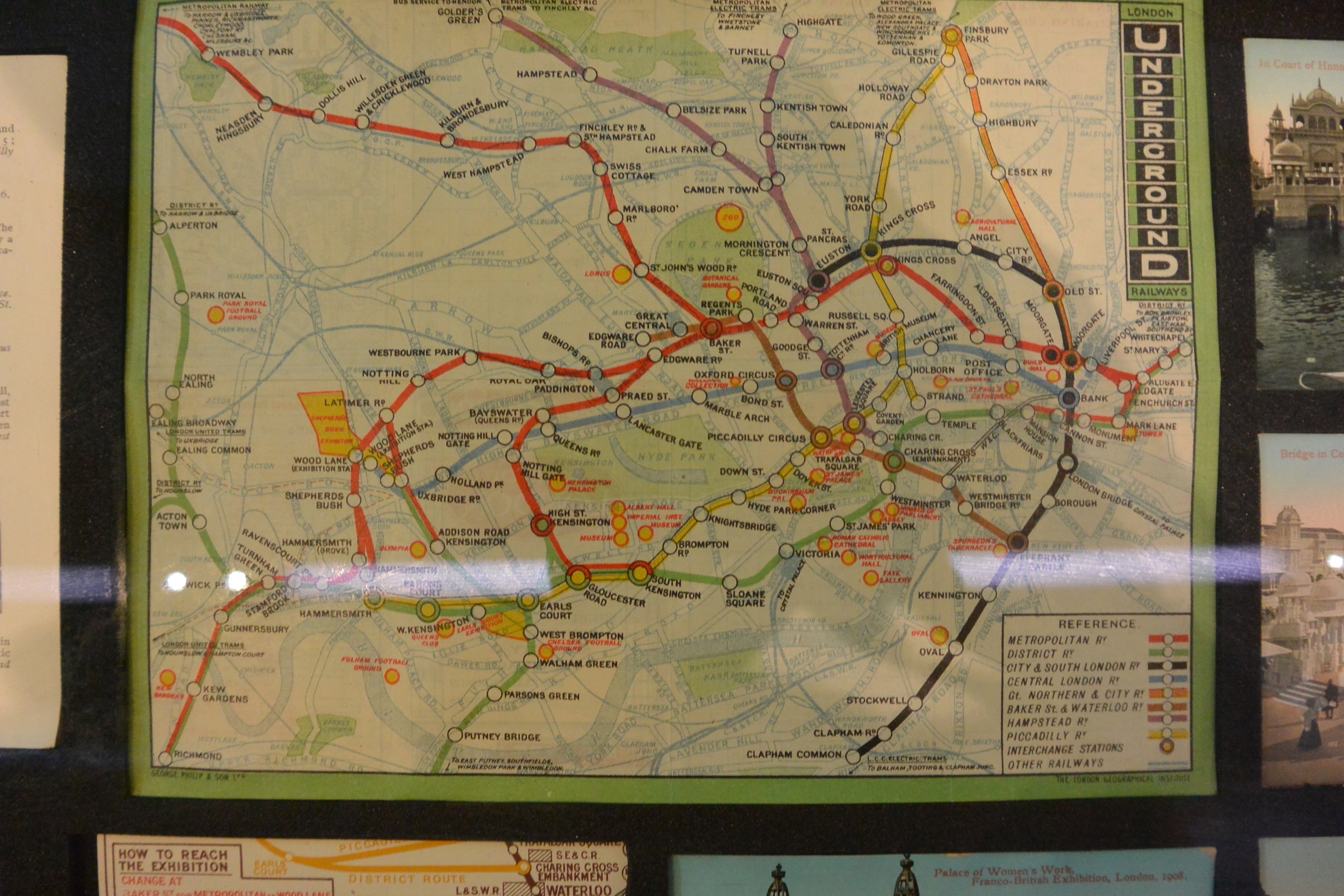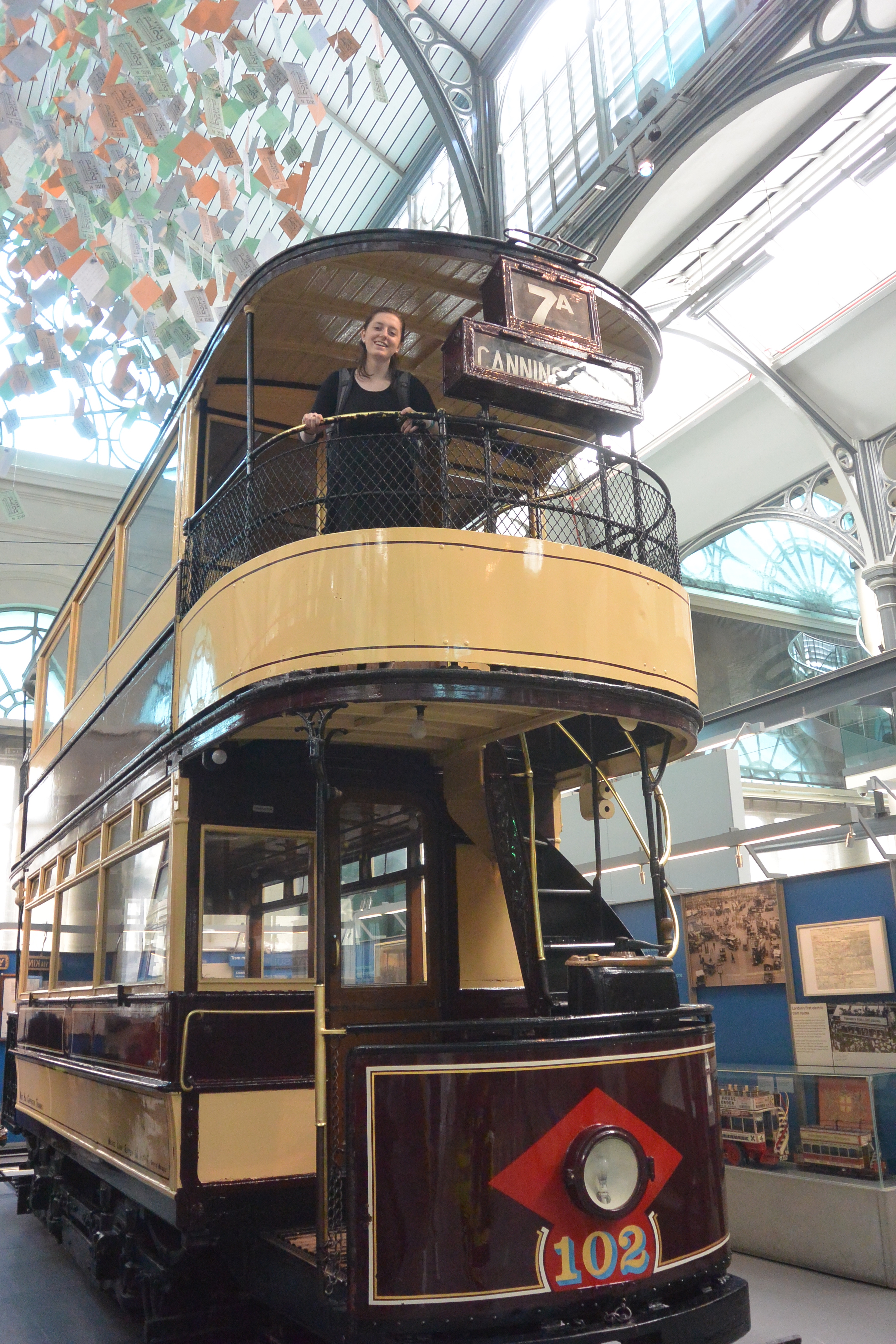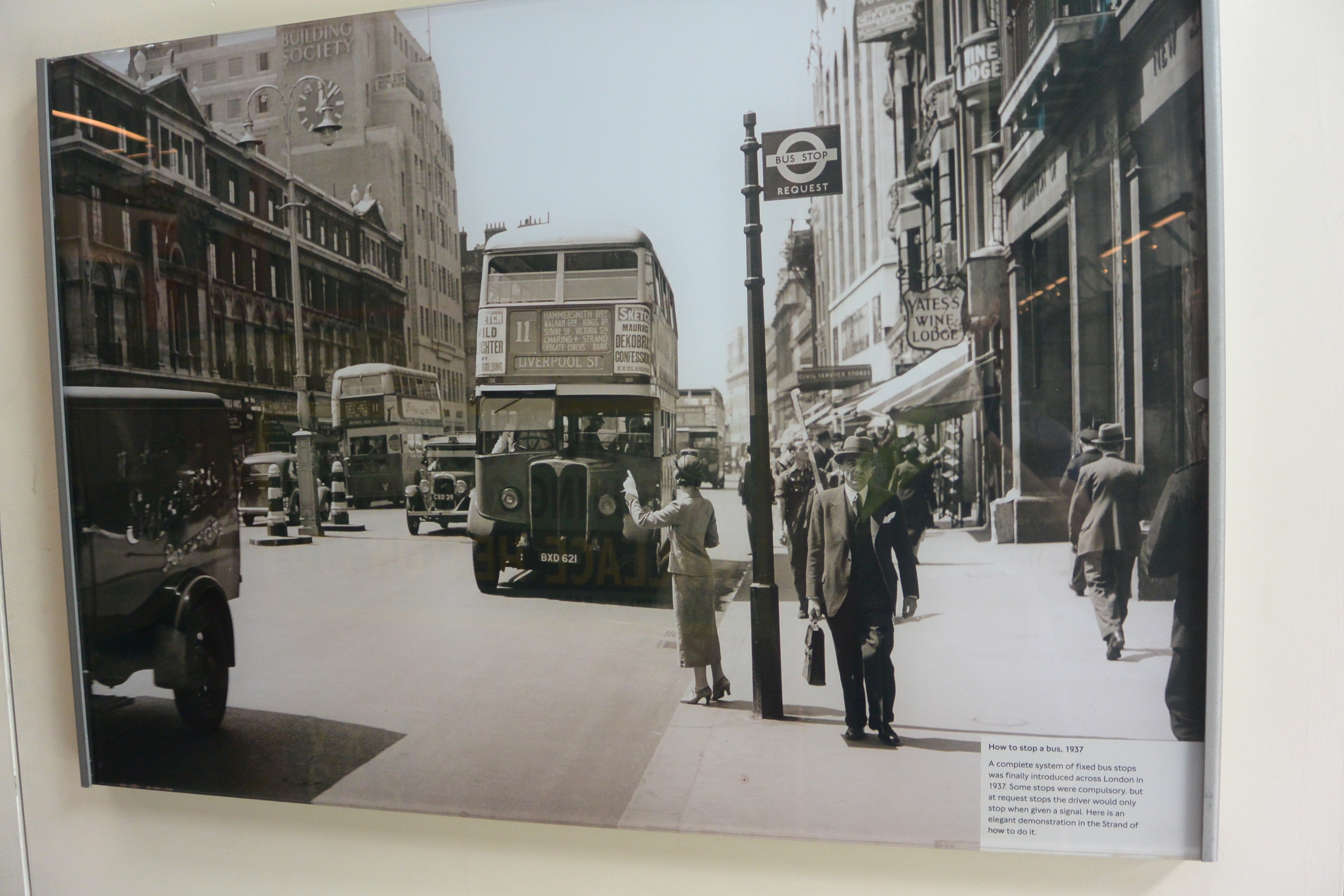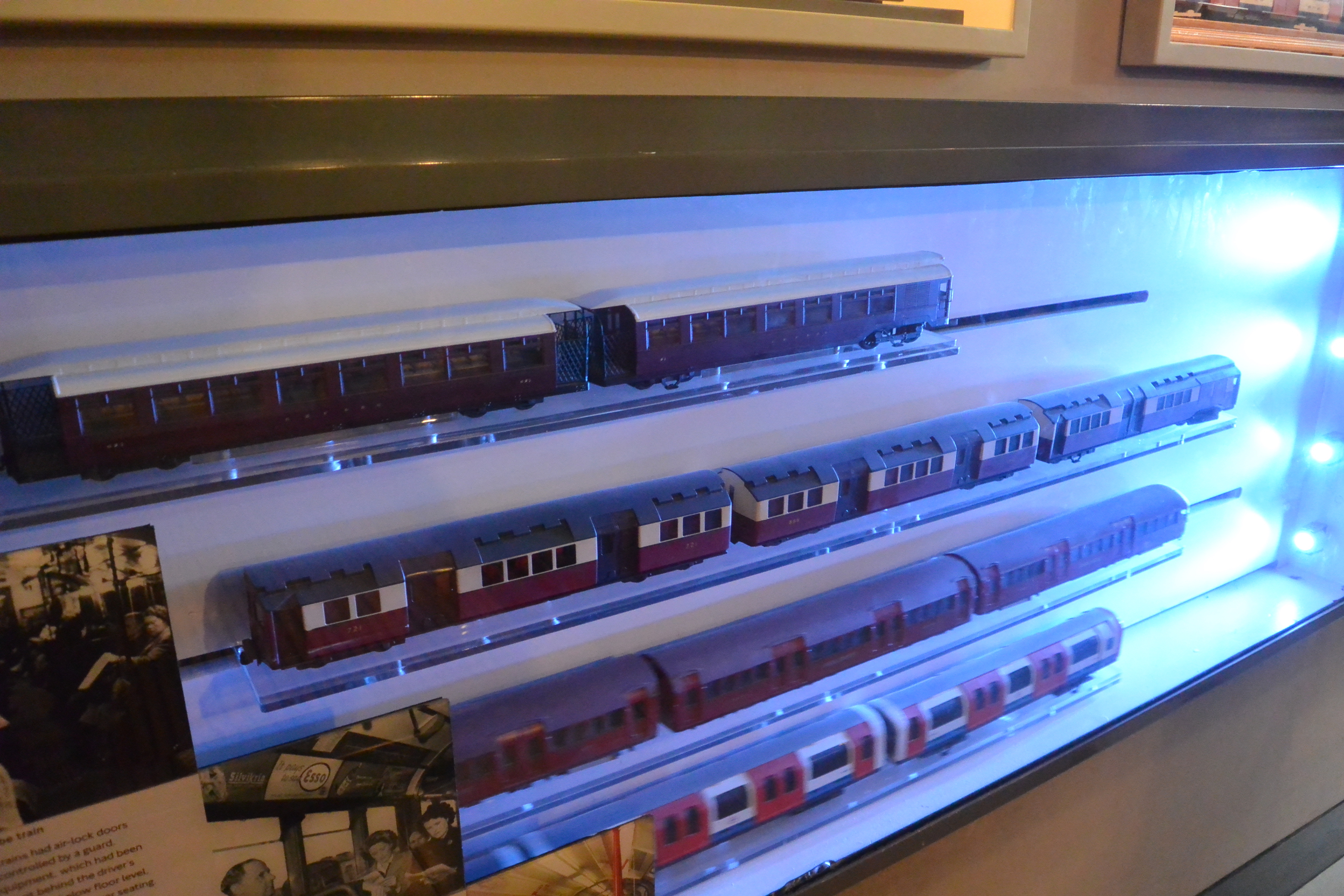Difference between revisions of "Getting Around London"
From Londonhua WIKI
Akacherski (talk | contribs) (→External Links) |
Akacherski (talk | contribs) (→Comparison of the tube to the double-decker bus) |
||
| Line 97: | Line 97: | ||
==Transportation in the Future== | ==Transportation in the Future== | ||
<br><br> | <br><br> | ||
| − | ==Comparison of the | + | ==Comparison of the Tube to the Double-Decker Bus== |
=Gallery= | =Gallery= | ||
Revision as of 09:16, 17 May 2017
Getting Around London
by Andrew Kacherski and Emily McEachern
 The Tube |
 Double Decker Bus |
Contents
Abstract
The paragraph should give a three to five sentence abstract about your entire London HUA experience including 1) a summary of the aims of your project, 2) your prior experience with humanities and arts courses and disciplines, and 3) your major takeaways from the experience. This can and should be very similar to the paragraph you use to summarize this milestone on your Profile Page. It should contain your main Objective, so be sure to clearly state a one-sentence statement that summarizes your main objective for this milestone such as "a comparison of the text of Medieval English choral music to that of the Baroque" or it may be a question such as "to what extent did religion influence Christopher Wren's sense of design?"
Introduction
I suggest you save this section for last. Describe the essence of this project. Cover what the project is and who cares in the first two sentences. Then cover what others have done like it, how your project is different. Discuss the extent to which your strategy for completing this project was new to you, or an extension of previous HUA experiences.
As you continue to think about your project milestones, reread the "Goals" narrative on defining project milestones from the HU2900 syllabus. Remember: the idea is to have equip your milestone with a really solid background and then some sort of "thing that you do". You'll need to add in some narrative to describe why you did the "thing that you did", which you'd probably want to do anyway. You can make it easy for your advisors to give you a high grade by ensuring that your project milestone work reflects careful, considerate, and comprehensive thought and effort in terms of your background review, and insightful, cumulative, and methodical approaches toward the creative components of your project milestone deliverables.
Section 1: Background
The Tube
History
The world's first public railway was a horse drawn line near London in 1803. Steam locomotives would come to take their place in 1825. They applied this idea to passenger trains. George Stephenson built the first inter-city passenger line, the Liverpool & Manchester Railway, in 1830. The first suburban railways opened in 1837 and took passengers from London to Paris and vice versa.
In 1854, The Metropolitan Railway Company was given the task of building an underground line to relieve the city traffic congestion. The underground construction also meant that no property needed to be destroyed at ground level, in central London. This line would bring passengers to Paddington, Euston, and King's Cross stations. This line would be known as the Metropolitan Railway.
Outside of Central London, in the 1860s the main southern lines were given permission to extend across the river to Victoria, Blackfriars and Cannon Street and shortly after this the Northern and Eastern lines were given permission as well to expand. Due to this expansion, by 1900 London had more terminals than any other city in the World. Unfortunately this meant that at least 100,000 British people had their homes destroyed by the creation of new lines and stations and railway companies were not legally responsible for finding places for them to live, leaving thousands of people homeless.
In the early 1900's, thousands of people traveled to London's city center for work from the suburbs. Horse drawn carriages could not take them the distance needed to get to their jobs. Trains became the preferred mode of transportation. This allowed the middle class to move out of the city center to more affordable suburbs and still work in the city. In 1912, it was estimated that 25% of all riders rode the cheap, early, workman's train. This 25% was dominated by men. Women often rode the suburban rails for leisure travel.
During the beginning of the Second World War, preparations were made to protect the city's transportation systems because many feared that the city would be destroyed by Nazi air raids. Staff for the various transportation systems were trained in fire fighting and first aid in case of emergency, and some of the Underground's stations were converted to air raid shelters. The government also utilized the underground stations as administrative offices and for military purposes. Evacuation procedures were also created in case of emergency, so children could find safety in case of an attack situation. Similar to many other jobs during World War II, women began to replace men as they went off to war.
Technology that made the Tube possible
With the ability to harness water pressure, the first lift was installed into the underground in 1890. This was the first lift of its kind because while Otis (who did work in Worcester MA) was building lifts to bring people up floors, this lift was designed to bring people down levels. This lift brought people down 50 feet. Those who rode it said it gave them the sensation that the earth is rising around you. Without this technology, the tube would not be where it is today. People are more inclined to use the tube since it has a safe and easy way to get to the platform as opposed to taking 5 flights of stairs with their stuff (baby carriages, groceries, etc). It also allowed the handicapped to easily access the platform.
Electricity was another major technology that allowed the tube to thrive. Prior to 1890, the trains were not electric. This means that they were using steam engines. When you are 50 feet below the ground in a concrete tube full of steam-exhaust, it gets quite warm. People often did not take the trains because it felt like torture, an article in The Times wrote in 1884 "a journey from Kings Cross to Baker street is a form of mild torture which no person would undergo if he could conveniently help it". They would rather walk than pay to go into a boiling hot tunnel. With the introduction of electricity, tunnels became cooler and quieter. This attracted more people it made the ride more enjoyable.
Similar to the invention of the lift, the escalator became a necessary part of the Tube, after its first use in 1911, as it expanded deeper underground. Traveling to the track from ground level could become a very strenuous task in certain stations that go very deep underground, such as in Angel where one escalator rises 27.5 meters vertically. Climbing this distance on a staircase would be very difficult for some people and by implementing the system of escalators the Tube has become accessible to many more people.
A much more recent innovation that helps the London Underground system run smoothly is the Oyster Card. Launched in 2003, the Oyster Card was simply a card with microchip technology that allowed the passenger to more easily enter the tube, by simply tapping their card on the yellow circle on the gate to enter the station. This is a fast and effective way to get passengers in and out of stations, making busy morning commutes much easier. However, the original design of the Oyster Card was somewhat flawed because it was easy for hackers to clone Oyster Cards. The cards were changed eventually and now used radio-frequency identification (RFID) technology. RFID technology uses an electromagnetic field to operate. The Oyster Card has contributed to the popularity of the Tube as well, because it is convenient for many commuters to easily check travel records and the balance of their card online.
Successes and why
The tube is popular for numerous reasons. It is a fast and efficient way to get around the city. It can reach speeds of up to 20.5 mph in some areas and 60 mph in the metropolitan line without having to worry about the city traffic above ground. It has 250 miles of track so it can take you almost anywhere in the city you can think of. The flat fare is also another reason for its success. This started in 1907 with a rate of 2 pence. This was fairly cheap for the time and allowed people to get across the city. People saw it as a major convenience.
Today, the Tube is still extremely popular, and its is showing a continuous pattern of exponential increase. As an example, 26.6 million trips were made on average per day in 2014, which is an 8.2% increase from only 6 years earlier in 2008. It is predicted that by 2041 there will be 5.5 million more trips made each day. This increase is partly due to London's past economic success and also to technological advancements that are making the London Underground a more effective system as a whole.
The Double Decker Bus
History
The London bus dates back to 1829 with the introduction of the omnibus. Due to licensing regulations, monopolies of public transportation in the city center were tightly controlled. To get around this, George Shillibeer ran his omnibus on heavily traveled routes outside of the city. This bus held 22 passengers and had only one route: from Paddington to Islington.bThis bus would often get crowded so they had the revelation of adding seats to the roof, creating the first double decker bus. As they gained popularity, features were added to them such as a roof on the second deck. It was advertised saying "(the) omnibus if fashionable, French, and suitably respectable for Ladies and Children." Eventually the government stepped in, in 1832, to end the monopoly of public transport and competition among bus services began to rise.
As transportation got more popular, the bus lines expanded to accommodate more places and riders. During the first world war, public transportation became less reliable and led small independent transport companies to step in to solve this and make a profit. So many people did this that the roads became reckless and dangerous. The government had to intervene to combat this and created a single authority responsible for overseeing London's public transport. This authority would be known as London Transport.
London Transport became a national authority in 1948 and was overseen by central government. In 1970, oversight was given to the Greater London Council. With the deregulation of bus services outside of London in 1986, oversight was once again shifted to the central government. The government then went as far as abolishing the Greater London Council. They then created London Buses Limited. London Buses Limited would now have to compete against privately owned operators for lines and passengers. Currently buses are run by Transport for London which is overseen by the Mayor of London. He creates and implements transport strategies that will accommodate growth.
Technology that made the Double Decker Bus possible
Bus technology advanced the same as cars. The same factors that allowed cars to gain in popularity and safety also contributed to buses. The cab over design of the double decker bus allowed it to do well in the city. It allowed the bus to make tighter turns which was important in the narrow streets of London. The tires also played a major role. This can be seen in the 20th century when they switched the solid rubber tires to ones filled with air. This increased their traction on the road, making them safer. Their technologies are still changing. Currently in the city there are around 2000 hybrid buses and 8 hydrogen buses in the fleet. They were introduced as a green initiative to reduce on carbon emissions in the city. Within the past year, the city announced that the first fully electric double decker bus will begin routes along the city. This will help tremendously with pollution as the current buses run of natural gas. This technology will help to cut on fuel costs and environment emissions thus helping the city be more cost efficient and be more sustainable.
Succeses and why
In 1920 the bus was the most popular method of transportation in London. By the time 1930 came around, the people of London were making close to 2 Billion bus trips per year, which was more than double the amount that was being made in 1921. The large increase in popularity was caused by many changing aspects of the buses and their routes. Covered second levels of the buses were created and new pneumatics made the bus ride much more comfortable for the passengers. Bus routes also expanded to be just from central London to the new suburban areas and into the country. These advances to the bus and lines gave passengers a feeling that they were being taken care of and also gave them a pleasant experience. Traffic times were greatly reduced because less people were in cars because they were riding buses. Plus in some cases it was found to be more cost efficient to ride the bus to the same place you would normally drive. Today many people take the bus because it is cheaper than the tube and takes you to different areas. The bus runs consistently all night where certain areas on the tube close down or have limited service. This also contributes to its popularity.
Section 2: Deliverable
In this section, provide your contribution, creative element, assessment, or observation with regard to your background research. This could be a new derivative work based on previous research, or some parallel to other events. In this section, describe the relationship between your background review and your deliverable; make the connection between the two clear.
How have both the Tube and Double-Decker buses become so iconic?
...use as many subsections or main sections as you need to support the claims for why what you did related to your Background section...
Transportation in the Future
Comparison of the Tube to the Double-Decker Bus
Gallery
Conclusion
In this section, provide a summary or recap of your work, as well as potential areas of further inquiry (for yourself, future students, or other researchers).
References
- London Transport Museum. (n.d.). Retrieved May 11, 2017, from https://www.ltmuseum.co.uk/
- Technological innovations that make London Underground Work. (2016, September 08). Retrieved May 11, 2017, from https://www.eurotransportmagazine.com/20538/transport-extra/technology-london-underground/
- Transport for London | Every Journey Matters. (n.d.). London buses. Retrieved May 11, 2017, from https://tfl.gov.uk/corporate/about-tfl/culture-and-heritage/londons-transport-a-history/london-buses
- London Underground. (2017). In Encyclopædia Britannica. Retrieved from http://academic.eb.com.ezproxy.wpi.edu/levels/collegiate/article/London-Underground/471501
Attribution of Work
For milestones completed collaboratively, add a section here detailing the division of labor and work completed as part of this milestone. All collaborators may link to this single milestone article instead of creating duplicate pages. This section is not necessary for milestones completed by a single individual.



